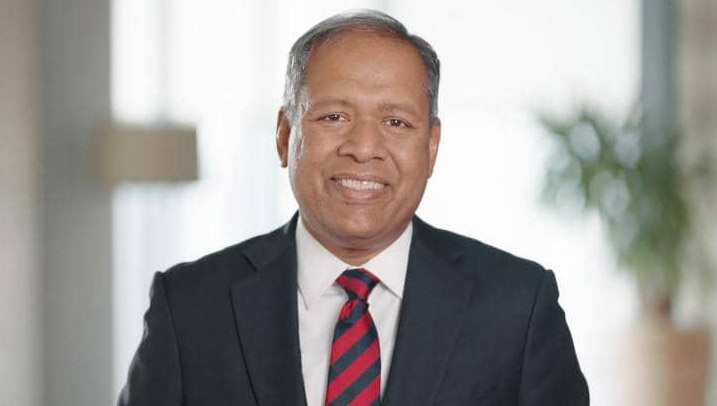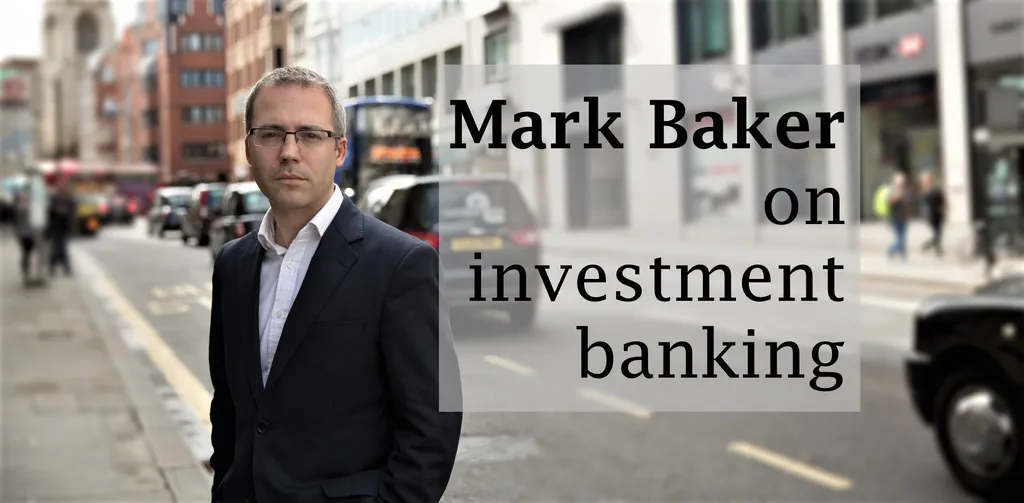As Barclays chief executive CS Venkatakrishnan stepped on stage in London this morning to present the bank’s first investor day for 10 years, he might have been forgiven for wondering why he was yet again having to tell people to believe in the idea of a big UK investment bank.
Surely, he might have been tempted to wish, the experience of the coronavirus pandemic in 2020 would have laid to rest the questions about whether an investment bank – and a US-focused one at that – sat comfortably within a bank like Barclays?
After all, that is how it seemed in May 2021, when we dived deep into the franchise, interviewing more than 30 senior bankers across the business. That was off the back of a mostly stellar performance in 2020 in which the ability of the investment bank to act as a hedge against worsening performance elsewhere in the group had proved itself.
Even activist shareholder Edward Bramson, who had long been agitating for a structural upheaval that would have seen the bank exit a business that he saw as acting as a drag on returns, had seemed to concede defeat, selling his stake.
In any case, hadn’t all this really been settled back in 2015, when the bank jettisoned Antony Jenkins, the chief executive who had taken over from swashbuckling Bob Diamond in 2012 but whose puritan reforming zeal had been just a little too much for Barclays to bear?
After all, before Jes Staley was finally forced to step down in 2021, he had appeared to have presided over the final vindication of the business model.
And yet here we are. It is 2024 and another Barclays CEO is having to make the case.
Low point
The reason, as it always has been, is simple: returns. The investment bank’s return on tangible equity (RoTE) was 14% in 2021, but it was just 7% in 2023.
Venkat knows that he cannot simply pass that off as a point in the cycle. He needs to make the case again, and he will doubtless need to make it more times. And, in typical fashion for Barclays, he finds himself needing to make the case for the investment bank as much internally as externally, given the grumblings widely circulated about a difficult bonus season and a less than soaring morale among his bankers.

The other reason, as it always has been, is scepticism. For all that Barclays’ investment bank outperformed many expectations in the pandemic, it also faces formidable obstacles getting any further – and investors sense it.
One of the problems with rising to a point where you are competing with the big US-based investment banks is that you are competing with the big US-based investment banks.
There are clearly pockets where Barclays can credibly outperform even those, and particularly as Citi wrestles with its own rebalancing. But more than that remains very tough.
That will be part of the reason why so much of what the bank has announced today is built on improving efficiency – of capital, of technology, of processes, of everything.
Venkat has also tweaked the management of the investment bank, with former global head of CIB Paul Compton stepping back into a chairman role; former global markets co-head Stephen Dainton replacing Compton as president of Barclays Bank PLC and appointed head of investment bank management; and Adeel Khan assuming sole responsibility for global markets.
Cathal Deasy and Taylor Wright remain as co-heads of banking.
Greatest hits. Again
In much of what he has announced today, Venkat is treading familiar ground for the peer group of global corporate and investment banks. His investor day at times sounded like a rehash of some of their greatest hits of the last five years.
We had simplification into five business lines reporting to the CEO (Citi, 2023); ditching the idea of a single investment bank head (Bank of America, 2021); a doubling down on financing in global markets (Goldman Sachs, 2020); separating the sober corporate bank from the tricky investment bank (Deutsche Bank, 2019); and the investment bank’s “secret sauce” being its synergies (everyone, post-GFC).
And, perhaps most striking of all, we had “measured ambition” (BNP Paribas, for ever).
Mercifully, though, Venkat steered clear of emulating his Societe Generale counterpart Slawomir Krupa, who announced at his bank’s investor day in 2023 a plan for… zero revenue growth.
Barclays has almost the opposite problem to SocGen – ambitions that may yet outstrip what is possible.
In much of what he has announced today, Venkat is treading familiar ground for the peer group of global corporate and investment banks
The investment bank, Barclays tells us, should achieve the group-wide RoTE of at least 12% by 2026, and it will do this without increasing the capital allocated to it.
In fact, there will be a real-terms cut in the risk-weighted assets (RWAs) in the investment bank because they will stay unchanged while also absorbing the increased requirements of what most of the world calls Basel IV but which Venkat likes to call Basel 3.1.
The result is that RWAs in the investment bank will fall from 63% of the group total in 2023 to about 50% in 2026 – although via a lower starting point of 58% in 2023 if one recalculates according to the bank’s new reporting structure.
That shift is a big part of the bank’s overall plan at group level: to shift RWAs into its higher returning businesses. And so Barclays is targeting high teens for Barclays UK, the newly separated UK corporate bank, which looks eminently manageable compared with a 2023 result of about 20%, as well as more than 25% for its private banking business, compared with a 2023 RoTE of 33%.
Its US consumer bank, another addition to the reporting structure, is also aiming for an above-12% RoTE, but off the back of a tiny 4% 2023 RoTE.
Big assumptions
In this morning’s presentations, the bank couldn’t tell analysts often enough that its projections for improved investment banking performance were not predicated on a big improvement in market conditions. But from where I’m sitting, the targets still seem to have quite a bit of that baked in.
Take investment banking, where the bank says it is hoping for the banking wallet to revert to the 10-year average. First, that is itself a fairly big uplift assumption, and second, there is no certainty that Barclays would capture even a pro-rata chunk of that reversion if it were to happen.
After all, a big part of the fall in wallet in recent years has been in equity capital markets and advisory, not exactly areas where Barclays is seen as a market leader, especially not outside the UK.
I’m not sure one can assume that a deal-flow recovery translates smoothly into Barclays keeping pace with it, particularly not when Venkat is also stating that he wants to reduce the division’s reliance on its one true leading franchise, debt capital markets, in part because of its lower capital efficiency.
On top of that, some £700 million of improvement is targeted from management initiatives, in other words the stuff the bank says is within its own control.
I’m not sure one can assume that a deal-flow recovery translates smoothly into Barclays keeping pace with it
Here the mantra is selling more products to its existing clients – like everyone else in the industry is also trying to do – as well as building in ECM and advisory.
As anyone who has watched Barclays for more than five minutes will know, the bank has tried to build a broader ECM and advisory franchise for years, in part to be less reliant on its legacy Lehman Brothers business in the US but also to capture mandates it thinks it ought to be getting by right, given its corporate banking and lending relationships.
That US business remains strong, and so really moving the needle will presumably require building elsewhere, in exactly those regions where activity is struggling to pick up and where Barclays has repeatedly failed to build in the past, even when conditions for deal flow were much more buoyant than they are now.
Even on the global markets side, ambitions look pretty punchy.
The industry wallet is assumed to stay flat, with improvement at Barclays coming from pushing in three focus areas where the bank thinks it can do more, which are European rates, equity derivatives and securitized products trading, as well as continuing to expand its financing businesses in prime and fixed income.
Barclays thinks it can get some £500 million of incremental growth from the three focus areas, based largely on the fact that the bank is below the top five in these and so has outsized room to grow.
In European rates it has a share of about 7.5%, in equity derivatives about 4.5% and in securitized products trading about 5% – and it says that every one percentage point share gain in these amounts to about £200 million in revenue.
And it is targeting another £600 million of uplift in financing, compared with £2.9 billion in 2023, for a compound annual growth rate of 5%.
Wishing won’t make it so
Taken as a whole, is the plan realistic?
There are plenty of reasons why banks are lower than they would like to be in any number of businesses, and it is rarely as simple as not devoting enough focus to them.
Management teams, of course, may prefer to think it is, because they want to be able to argue that improvement is within their gift, rather than being reliant on the vagaries of the markets, the competitors or the clients. But wishing it doesn’t make it so.
It is clear that if Barclays did ever seriously contemplate a more radical restructuring of its investment bank – as it is rumoured to have done, although no one would be drawn on that at the investor update – that plan has been put firmly in the locker for now.
And it is only fair to note that Barclays is building from a position of strength in many areas of its investment bank. That is part of the issue, of course, in that improvement gets incrementally harder, not because the bank is already at the top of the tree but simply because the branches get further apart as you climb.
All of which makes the relatively inward focus of this strategic update understandable, but it doesn’t automatically make it more achievable.
Arguments based on capturing mere beta are an easier sell, assuming conditions support them: for one so dependent on alpha, investors may prefer to wait and see.




